[English] 日本語
 Yorodumi
Yorodumi- PDB-3auw: Cytoplasmic domain of inward rectifier potassium channel Kir3.2 i... -
+ Open data
Open data
- Basic information
Basic information
| Entry | Database: PDB / ID: 3auw | ||||||
|---|---|---|---|---|---|---|---|
| Title | Cytoplasmic domain of inward rectifier potassium channel Kir3.2 in complex with cadmium | ||||||
 Components Components | (Potassium inwardly-rectifying channel, subfamily J, member ...) x 2 | ||||||
 Keywords Keywords | TRANSPORT PROTEIN / immunogloblin-like fold / ion transport / G protein beta gamma subunits | ||||||
| Function / homology |  Function and homology information Function and homology informationG-protein activated inward rectifier potassium channel activity / Activation of G protein gated Potassium channels / Inhibition of voltage gated Ca2+ channels via Gbeta/gamma subunits / inward rectifier potassium channel complex / voltage-gated monoatomic ion channel activity involved in regulation of presynaptic membrane potential / inward rectifier potassium channel activity / parallel fiber to Purkinje cell synapse / potassium channel activity / negative regulation of insulin secretion / presynapse ...G-protein activated inward rectifier potassium channel activity / Activation of G protein gated Potassium channels / Inhibition of voltage gated Ca2+ channels via Gbeta/gamma subunits / inward rectifier potassium channel complex / voltage-gated monoatomic ion channel activity involved in regulation of presynaptic membrane potential / inward rectifier potassium channel activity / parallel fiber to Purkinje cell synapse / potassium channel activity / negative regulation of insulin secretion / presynapse / presynaptic membrane / postsynapse / membrane Similarity search - Function | ||||||
| Biological species |  | ||||||
| Method |  X-RAY DIFFRACTION / X-RAY DIFFRACTION /  SYNCHROTRON / SYNCHROTRON /  MOLECULAR REPLACEMENT / MOLECULAR REPLACEMENT /  molecular replacement / Resolution: 3.56 Å molecular replacement / Resolution: 3.56 Å | ||||||
 Authors Authors | Inanobe, A. / Kurachi, Y. | ||||||
 Citation Citation |  Journal: Biochem.Biophys.Res.Commun. / Year: 2011 Journal: Biochem.Biophys.Res.Commun. / Year: 2011Title: Inverse agonist-like action of cadmium on G-protein-gated inward-rectifier K(+) channels Authors: Inanobe, A. / Matsuura, T. / Nakagawa, A. / Kurachi, Y. | ||||||
| History |
|
- Structure visualization
Structure visualization
| Structure viewer | Molecule:  Molmil Molmil Jmol/JSmol Jmol/JSmol |
|---|
- Downloads & links
Downloads & links
- Download
Download
| PDBx/mmCIF format |  3auw.cif.gz 3auw.cif.gz | 162.4 KB | Display |  PDBx/mmCIF format PDBx/mmCIF format |
|---|---|---|---|---|
| PDB format |  pdb3auw.ent.gz pdb3auw.ent.gz | 130.5 KB | Display |  PDB format PDB format |
| PDBx/mmJSON format |  3auw.json.gz 3auw.json.gz | Tree view |  PDBx/mmJSON format PDBx/mmJSON format | |
| Others |  Other downloads Other downloads |
-Validation report
| Summary document |  3auw_validation.pdf.gz 3auw_validation.pdf.gz | 462.6 KB | Display |  wwPDB validaton report wwPDB validaton report |
|---|---|---|---|---|
| Full document |  3auw_full_validation.pdf.gz 3auw_full_validation.pdf.gz | 473.7 KB | Display | |
| Data in XML |  3auw_validation.xml.gz 3auw_validation.xml.gz | 17.2 KB | Display | |
| Data in CIF |  3auw_validation.cif.gz 3auw_validation.cif.gz | 22.1 KB | Display | |
| Arichive directory |  https://data.pdbj.org/pub/pdb/validation_reports/au/3auw https://data.pdbj.org/pub/pdb/validation_reports/au/3auw ftp://data.pdbj.org/pub/pdb/validation_reports/au/3auw ftp://data.pdbj.org/pub/pdb/validation_reports/au/3auw | HTTPS FTP |
-Related structure data
| Related structure data | |
|---|---|
| Similar structure data |
- Links
Links
- Assembly
Assembly
| Deposited unit | 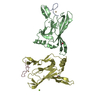
| |||||||||
|---|---|---|---|---|---|---|---|---|---|---|
| 1 | 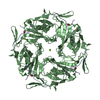
| |||||||||
| 2 | 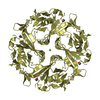
| |||||||||
| Unit cell |
| |||||||||
| Components on special symmetry positions |
|
- Components
Components
-Potassium inwardly-rectifying channel, subfamily J, member ... , 2 types, 4 molecules ACBD
| #1: Protein/peptide | Mass: 3115.602 Da / Num. of mol.: 2 / Fragment: Cytoplasmic N-terminus Source method: isolated from a genetically manipulated source Source: (gene. exp.)   #2: Protein | Mass: 20651.393 Da / Num. of mol.: 2 / Fragment: Cytoplasmic C-terminus Source method: isolated from a genetically manipulated source Source: (gene. exp.)   |
|---|
-Non-polymers , 4 types, 10 molecules 

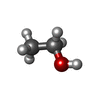




| #3: Chemical | | #4: Chemical | #5: Chemical | #6: Water | ChemComp-HOH / | |
|---|
-Experimental details
-Experiment
| Experiment | Method:  X-RAY DIFFRACTION / Number of used crystals: 1 X-RAY DIFFRACTION / Number of used crystals: 1 |
|---|
- Sample preparation
Sample preparation
| Crystal | Density Matthews: 2.83 Å3/Da / Density % sol: 56.5 % |
|---|---|
| Crystal grow | Temperature: 277 K / Method: vapor diffusion, sitting drop / pH: 8 Details: pH 8.0, VAPOR DIFFUSION, SITTING DROP, temperature 277K |
-Data collection
| Diffraction | Mean temperature: 100 K |
|---|---|
| Diffraction source | Source:  SYNCHROTRON / Site: SYNCHROTRON / Site:  SPring-8 SPring-8  / Beamline: BL41XU / Wavelength: 1 Å / Beamline: BL41XU / Wavelength: 1 Å |
| Detector | Type: RAYONIX MX225HE / Detector: CCD / Date: Feb 6, 2008 |
| Radiation | Monochromator: Si (111) double crystal / Protocol: SINGLE WAVELENGTH / Monochromatic (M) / Laue (L): M / Scattering type: x-ray |
| Radiation wavelength | Wavelength: 1 Å / Relative weight: 1 |
| Reflection | Resolution: 3.56→50 Å / Num. all: 27243 / Num. obs: 26865 / % possible obs: 99 % / Observed criterion σ(F): -3 / Observed criterion σ(I): 0 / Redundancy: 3.9 % / Rmerge(I) obs: 0.206 / Net I/σ(I): 6.714 |
-Phasing
| Phasing | Method:  molecular replacement molecular replacement |
|---|
- Processing
Processing
| Software |
| ||||||||||||||||||||||||||||||||||||||||||||||||||||||||||||||||||||||||||||||||||||||||||||||||||||||||||||||||||||||||||||||||||||||||||||||||||||||||||||||||||||||||||||||||||||||||||||||||||||||||
|---|---|---|---|---|---|---|---|---|---|---|---|---|---|---|---|---|---|---|---|---|---|---|---|---|---|---|---|---|---|---|---|---|---|---|---|---|---|---|---|---|---|---|---|---|---|---|---|---|---|---|---|---|---|---|---|---|---|---|---|---|---|---|---|---|---|---|---|---|---|---|---|---|---|---|---|---|---|---|---|---|---|---|---|---|---|---|---|---|---|---|---|---|---|---|---|---|---|---|---|---|---|---|---|---|---|---|---|---|---|---|---|---|---|---|---|---|---|---|---|---|---|---|---|---|---|---|---|---|---|---|---|---|---|---|---|---|---|---|---|---|---|---|---|---|---|---|---|---|---|---|---|---|---|---|---|---|---|---|---|---|---|---|---|---|---|---|---|---|---|---|---|---|---|---|---|---|---|---|---|---|---|---|---|---|---|---|---|---|---|---|---|---|---|---|---|---|---|---|---|---|---|
| Refinement | Method to determine structure:  MOLECULAR REPLACEMENT / Resolution: 3.56→30 Å / Cor.coef. Fo:Fc: 0.835 / Cor.coef. Fo:Fc free: 0.76 / Occupancy max: 1 / Occupancy min: 0.25 / SU B: 98.167 / SU ML: 0.661 / Cross valid method: THROUGHOUT / σ(F): 0 / ESU R Free: 0.863 / Stereochemistry target values: MAXIMUM LIKELIHOOD MOLECULAR REPLACEMENT / Resolution: 3.56→30 Å / Cor.coef. Fo:Fc: 0.835 / Cor.coef. Fo:Fc free: 0.76 / Occupancy max: 1 / Occupancy min: 0.25 / SU B: 98.167 / SU ML: 0.661 / Cross valid method: THROUGHOUT / σ(F): 0 / ESU R Free: 0.863 / Stereochemistry target values: MAXIMUM LIKELIHOODDetails: HYDROGENS HAVE BEEN ADDED IN THE RIDING POSITIONS U VALUES: WITH TLS ADDED
| ||||||||||||||||||||||||||||||||||||||||||||||||||||||||||||||||||||||||||||||||||||||||||||||||||||||||||||||||||||||||||||||||||||||||||||||||||||||||||||||||||||||||||||||||||||||||||||||||||||||||
| Solvent computation | Ion probe radii: 0.8 Å / Shrinkage radii: 0.8 Å / VDW probe radii: 1.4 Å / Solvent model: BABINET MODEL WITH MASK | ||||||||||||||||||||||||||||||||||||||||||||||||||||||||||||||||||||||||||||||||||||||||||||||||||||||||||||||||||||||||||||||||||||||||||||||||||||||||||||||||||||||||||||||||||||||||||||||||||||||||
| Displacement parameters | Biso max: 78.11 Å2 / Biso mean: 34.1835 Å2 / Biso min: 22.83 Å2
| ||||||||||||||||||||||||||||||||||||||||||||||||||||||||||||||||||||||||||||||||||||||||||||||||||||||||||||||||||||||||||||||||||||||||||||||||||||||||||||||||||||||||||||||||||||||||||||||||||||||||
| Refinement step | Cycle: LAST / Resolution: 3.56→30 Å
| ||||||||||||||||||||||||||||||||||||||||||||||||||||||||||||||||||||||||||||||||||||||||||||||||||||||||||||||||||||||||||||||||||||||||||||||||||||||||||||||||||||||||||||||||||||||||||||||||||||||||
| Refine LS restraints |
| ||||||||||||||||||||||||||||||||||||||||||||||||||||||||||||||||||||||||||||||||||||||||||||||||||||||||||||||||||||||||||||||||||||||||||||||||||||||||||||||||||||||||||||||||||||||||||||||||||||||||
| LS refinement shell | Resolution: 3.559→3.651 Å / Total num. of bins used: 20
| ||||||||||||||||||||||||||||||||||||||||||||||||||||||||||||||||||||||||||||||||||||||||||||||||||||||||||||||||||||||||||||||||||||||||||||||||||||||||||||||||||||||||||||||||||||||||||||||||||||||||
| Refinement TLS params. | Method: refined / Refine-ID: X-RAY DIFFRACTION
| ||||||||||||||||||||||||||||||||||||||||||||||||||||||||||||||||||||||||||||||||||||||||||||||||||||||||||||||||||||||||||||||||||||||||||||||||||||||||||||||||||||||||||||||||||||||||||||||||||||||||
| Refinement TLS group |
|
 Movie
Movie Controller
Controller


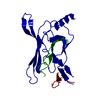

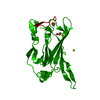
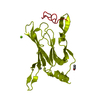
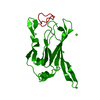
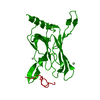
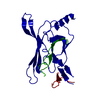
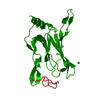

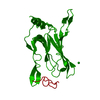
 PDBj
PDBj








